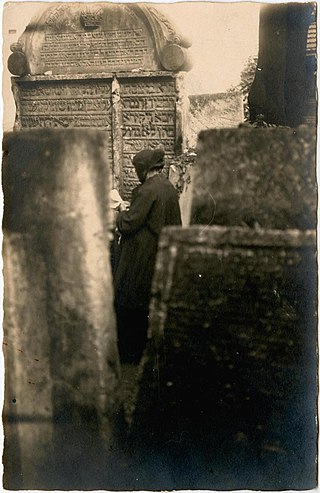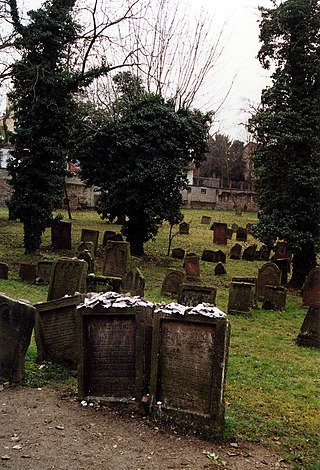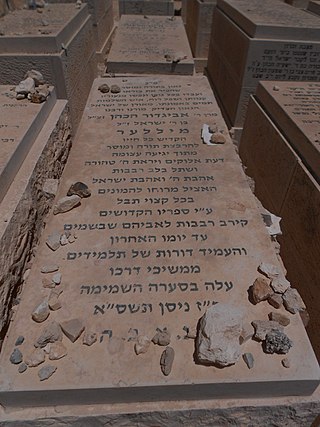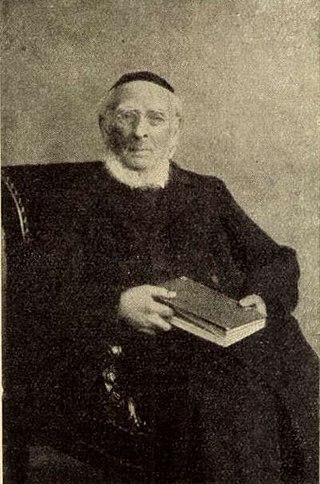Related Research Articles

The Tosefta is a compilation of Jewish Oral Law from the late second century, the period of the Mishnah and the Jewish sages known as the Tannaim.
Gershom ben Judah, best known as Rabbeinu Gershom and also commonly known to scholars of Rabbinic Judaism by the title Rabbeinu Gershom Me'Or Hagolah, was a famous Talmudist and Halakhist.

Abraham Isaac Kook, known as Rav Kook, and also known by the acronym HaRaAYaH, was an Orthodox rabbi, and the first Ashkenazi Chief Rabbi of British Mandatory Palestine. He is considered to be one of the fathers of religious Zionism and is known for founding the Mercaz HaRav Yeshiva.

Meir Simcha of Dvinsk (1843–1926) was a rabbi and prominent leader of Orthodox Judaism in Eastern Europe in the early 20th century. He was a kohen, and is therefore often referred to as Meir Simcha ha-Kohen. He is known for his writings on Maimonides' Mishneh Torah, which he titled Ohr Somayach, as well as his novellae on the Torah, titled Meshech Chochma.

Joshua ben Alexander HaCohen Falk was a Polish Halakhist and Talmudist, best known as the author of the Drisha and Prisha commentaries on the Arba'ah Turim as well as Sefer Me'irat Enayim (סמ"ע) on Shulkhan Arukh. His name also occurs as the Hebrew acronyms רפ"כ ("RaFaC"), מהרו"כ ("Ma-HaRWaC"), and מהר"י כ"ץ.
Israel Isserlin was a Talmudist, and Halakhist, best known for his Terumat HaDeshen, which served as one source for HaMapah, the component of the Shulkhan Arukh by Moses Isserles. He is also known as Israel of Neustadt, Israel of Marpurk, and Maharai.
Isaac ben Moses of Vienna, also called Isaac Or Zarua or the Riaz, is considered to be one of the prominent rabbis of the Middle Ages. He was probably born in Bohemia and lived between 1200 and 1270. He attained his fame in Vienna and his major work, the halachic guide known as the Or Zarua a compilation of halachic decisions and legal rulings, was very popular among Ashkenazic Jewry. He was a member of the Ashkenazi Hasidim and studied under many scholars, including Eliezer ben Joel HaLevi, Judah ben Samuel of Regensburg, Samson of Coucy and Eleazar of Worms. He was among the teachers of Meir of Rothenburg.

Meir of Rothenburg (c. 1215 – 2 May 1293) was a German Rabbi and poet, as well as a major contributing author of the tosafot on Rashi's commentary on the Talmud. He is also known as Meir ben Baruch, and by the Hebrew language acronym Maharam of Rothenburg. He was referred to by Rabbi Menachem Meiri as the "greatest Jewish leader of Zarfat " alive at the time.
Mordechai ben Hillel HaKohen, also known as The Mordechai or, by some Sephardic scholars, as The Mordechie, was a 13th-century German rabbi and posek. His chief legal commentary on the Talmud, referred to as The Mordechai, is one of the sources of the Shulchan Aruch. He was killed in the Rintfleisch massacres in 1298.
Ravina II HaKohen or Rabina II was a Babylonian rabbi of the 5th century.

Avigdor HaKohen Miller was an American Haredi (ultra-Orthodox) rabbi, author, and lecturer.
Zedekiah ben Abraham Anaw was an author of halakhic works and younger brother of Benjamin ben Abraham Anaw. He lived at Rome and received his Talmudic training not only in Rome but also in Germany where he was the pupil of Jacob of Würzburg and possibly also of Abigdor Cohen of Vienna.

The Rapoport-Bick dynasty was the most important of all the non-chasidic rabbinic dynasties of Medzhybizh, in Ukraine. The Rapoport dynasty traces its roots back to Rabbi Jacob Emden (1697–1776) who was involved in the Frankist debates of 1757 and his father Rabbi Tsvi Hirsh Ashkenazi, known as the Chacham Tsvi (1660–1718). The Rapoports themselves are a long distinguished rabbinic family that traces its roots back to Central Europe and Northern Italy in the 15th century.

Moses Löb Bloch was a Hungarian rabbi and rector at the Rabbinical Seminary of Budapest.
Meir ben Samuel, also known by the Hebrew acronym RaM for Rabbi Meir, was a French rabbi and tosafist, who was born in about 1060 in Ramerupt, and died after 1135. His father was an eminent scholar. Meir received his education in the Talmudical schools of Lorraine, his principal teachers being Isaac ben Asher ha-Levi and Eleazar ben Isaac of Mainz, with whom he later carried on a correspondence.

The gift of the foreleg, cheeks and maw of a kosher-slaughtered animal to a kohen is a positive commandment in the Hebrew Bible. The Shulchan Aruch rules that after the slaughter of animal by a shochet, the shochet is required to separate the cuts of the foreleg, cheek and maw and give them to a kohen freely, without the kohen paying or performing any service.
Aaron ben Eliezer was a German Talmudist, who flourished in the thirteenth century.
HaKohen is a Jewish given name and surname. Notable people with the name include:
Meir HaKohen was a German rabbinical scholar of the end of the thirteenth century. He authored Hagahot Maimuniot on Maimonides' Mishneh Torah. Giulio Bartolocci mistakenly identifies him with Meïr Ha-Kohen, a French scholar of the same century. He was a student of Meir of Rothenburg.
References
- ↑ See tosfot yeshanim cited by massoret hashass, ketuvot, 63b, https://hebrewbooks.org/shas.aspx?mesechta=15&daf=63b&format=pdf.
- ↑ See Responsa of Rabbi Meir of Rothenburg, ed Cremona, resp 12.
 This article incorporates text from a publication now in the public domain : Singer, Isidore; et al., eds. (1901–1906). "Abigdor Cohen". The Jewish Encyclopedia . New York: Funk & Wagnalls. It has the following bibliography:
This article incorporates text from a publication now in the public domain : Singer, Isidore; et al., eds. (1901–1906). "Abigdor Cohen". The Jewish Encyclopedia . New York: Funk & Wagnalls. It has the following bibliography:- Michael, Or ha-hayyim, No. 10;
- Zunz, Z.G. pp. 38, 42, 193.